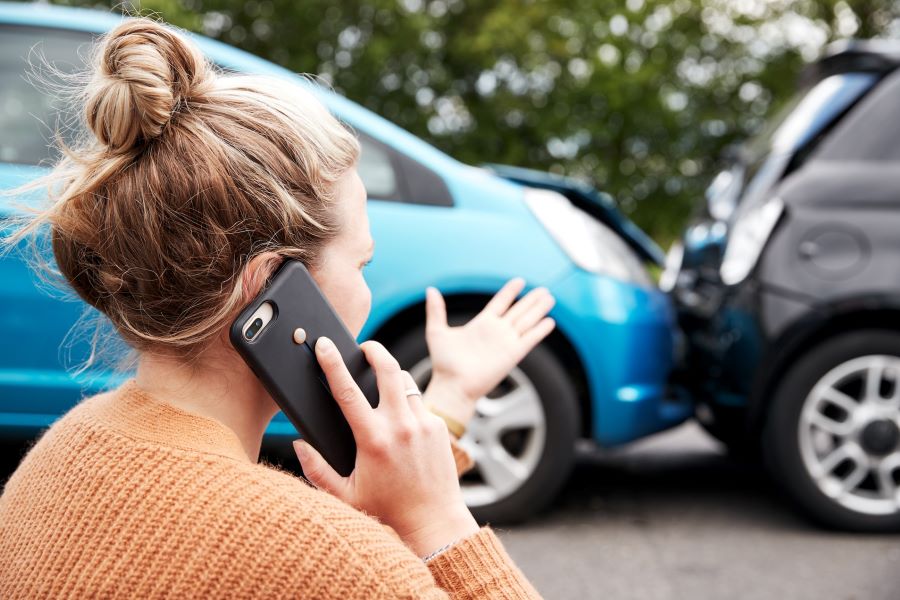Travel
What to Do After a Car Accident: A Step-by-Step Guide
Car accidents are unpredictable events that can happen for various reasons. In the United States, automobile accidents are the leading cause of injuries and fatalities, with around 40,990 people estimated to lose their lives in traffic-related incidents in 2023, according to the National Highway Traffic Safety Administration (NHTSA).
The aftermath of an accident can be overwhelming and disorienting, whether it’s a minor fender-bender or a more serious collision. Knowing what steps to take immediately after an accident can help keep you safe, protect your rights, and streamline the claims process.
Car injury attorney Jack D. Franks advises that having legal guidance can be invaluable when dealing with insurance companies. A lawyer can ensure you get the compensation you’re entitled to, using evidence and knowledge of the law to push for a fair settlement.
Here’s a step-by-step guide to help you deal with the aftermath of a car accident.

Ensure Safety of Everyone
The first priority after any accident is safety. Move to a safe location away from traffic, if possible. Check yourself and your passengers for injuries and call 911 if anyone is hurt. Once you are safely off the road, turn on your hazard lights to alert other drivers. If it’s safe to do so, move vehicles out of traffic to prevent further accidents.
Be sure to take photos of the accident scene before moving anything. These photos can serve as valuable evidence for insurance claims and legal matters. If moving the vehicles is not possible due to severe damage or injuries, stay in place and wait for emergency responders to arrive. Staying calm and focused on safety will help keep everyone as secure as possible in a difficult situation.
Exchange Information With Others
After ensuring everyone’s safety, share information about the car accident. This step is crucial for insurance and legal claims. Give the other driver your name, phone number, and insurance information. Get the same information from them. Record the vehicles’ make, model, color, and license plate numbers. Ask witnesses for contact information. Photos of the other driver’s license, insurance card, and accident scene are helpful.
When sharing information, be polite and refrain from discussing fault. Avoid making statements like “I’m sorry” or speculating about what caused the accident, as this can complicate the claims process. Make sure to provide accurate details to the police when they arrive to create a clear record of the event.
Document the Accident Scene
Clear photos of the vehicles and damage should be taken at the accident scene. Insurers and lawyers may need these photos. To show the accident from all angles, take pictures. Skid marks, road signs, traffic lights, and weather conditions that may have caused the accident must be photographed.
Besides photos, write down accident details while you can. Note the accident’s location, time, date, and a brief description. Include the other drivers’ vehicle make, model, license plate number, insurance, and contact information.
Encino car accident attorney David Davidi suggests that contacting scene witnesses is also recommended. Witness statements can aid insurance claims. The claims process will go more smoothly with thorough documentation.
Contact Your Insurance Company
Reach out to your insurance company as soon as possible to let them know about the car accident and begin the claims process. Delaying this step could compromise the claims process or deny coverage.
Communicate with your insurance company about the accident’s date, time, location, and witnesses’ contact information. A representative might come to evaluate the damage to your vehicle and assist you with the paperwork after your insurance company provides direction.
Ask your insurance company about any additional documentation needed to process the claim. Contact your insurance company immediately to begin recovering from the car accident and getting your vehicle repaired or replaced. Remember to avoid accepting any settlement or signing anything without consulting a lawyer.
Seek Medical Attention
After a car accident, you must prioritize your health and seek medical attention. If you feel fine, some injuries may not show symptoms. Professional medical evaluation is necessary to rule out hidden injuries or conditions. Timely medical records are crucial for establishing the cause and extent of your injuries. Delaying treatment can result in a lack of timely documentation, making it harder to prove the link between the accident and your injuries.
After a car accident, adrenaline can mask pain, making you feel fine. Internal injuries, concussions, and whiplash may not be obvious. Getting medical attention right away can really boost your chances of a complete recovery by helping to diagnose and treat any injuries you may have.
Conclusion
In the aftermath of a car accident, staying calm and taking the right steps can make all the difference in ensuring your safety, securing fair compensation, and protecting your legal rights. It’s essential to act quickly, follow the proper procedures, and seek professional help when needed. This process not only assists you in handling the immediate situation but also prepares you for a smoother and more successful claims process.
